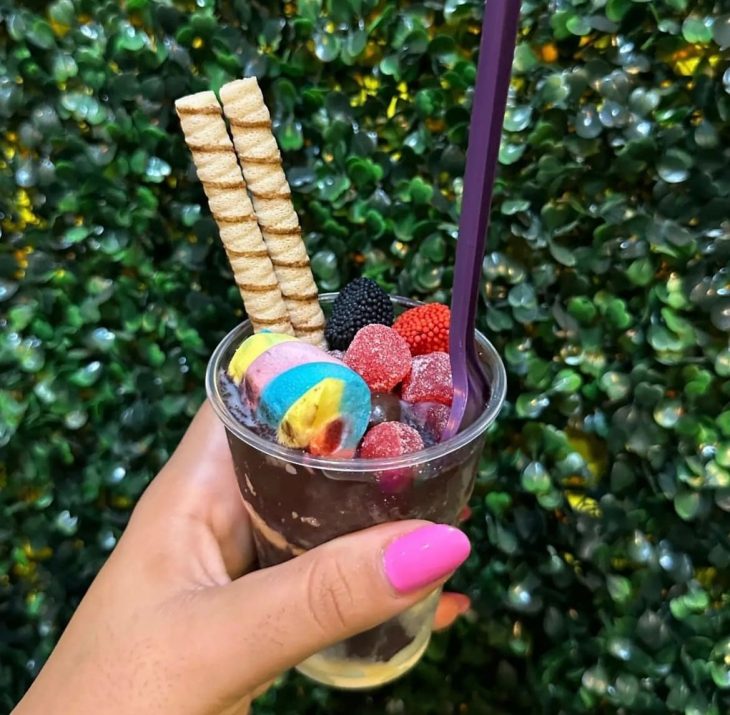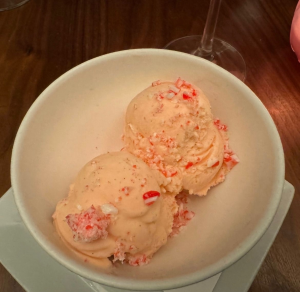
Ice-cream
Vol 26, Issue 19, 15 March 2024
Ice cream conquered Europe after the famous Venetian traveler Marco Polo brought a recipe for cooling sherbet from his trip to China. In Italy, dessert made of snow mixed with fruit juice has long been a favorite treat in noble houses. However, Europeans have not been able to freeze milk-based mixtures for a long time. In 1553, Catherine de’ Medici married Henry II. On the occasion of the celebration, ice cream made from raspberries, oranges and lemons was prepared for dessert. According to legend, the newly minted queen of France brought a recipe for a cold treat as a dowry. By the way, her son Henry III was so addicted to the delicacy that he consumed it daily.
The best masters of cold desserts worked at the royal courts. It is known, for example, that in the light of the Dauphin, when he entered the royal palace in 1547, there was a manufacturer of soft dishes and drinks Bentalenti. Chocolate and vanilla ice cream first appeared during the reign of Queen Anne of Austria of France. At one of the banquets of her son Louis XIV, it was announced that closer to the end of the holiday, the chef would serve each guest a dessert that looks like a fresh egg. But, to everyone’s surprise, this “egg” tasted deliciously sweet and also cold.

In the second half of the 17th century, ice cream became available not only to persons of noble blood. Ice cream became publicly available thanks to the entrepreneurial spirit of the Italians. In 1660, Francesco Procopio di Coltelli opened the first ice cream parlor in Paris opposite the Comedie Francaise Theatre. In his homeland, Palermo, he was a fisherman. In France, he decided to try his luck in the “sweet” field, especially since he inherited an ice cream churning machine from his grandfather: a primitive device consisting of two pots inserted into one another, a handle with blades for mixing was attached to the top lid. In 1782, this cafe, renamed “Prokop” in the French way, offered up to eighty varieties of ice cream to customers. The establishment is thriving to this day. The old menu has also been preserved: “frozen waters” with various syrups, cold sorbet from berries, fruit ice cream — all this was served at Prokop in the 18th century. The popularity of the cafe was also added by the fact that the owner received royal patents for many delicacies that were served only there. As a result, many famous figures of the 18th and 19th centuries visited Prokop: Denis Diderot, Jean-Jacques Rousseau, Maximilian Robespierre, Honore de Balzac, Victor Hugo.
Among the regulars of the institution was Napoleon Bonaparte. He fell in love with icy sweets so much that even in exile on the island of St. Helena, he ordered himself a device for making them, which a compassionate Englishwoman did not hesitate to send him.
Interesting facts:
1. Waffle cones, in which ice cream is placed, were invented in 1904 during the World’s Fair in St. Louis, Missouri, USA. It is worth noting that before 1896, ice cream was eaten in saucers or sockets.
2. A cow can give so much milk all her life that 34,000 liters of ice cream can be made from it.
3. The main ingredient of ice cream is air. It gives the ice cream softness and flavor. If there was no air in the ice cream, it would be as hard as a stone.

- New Year’s mood - 22nd November 2024
- Minimalism is a way of life. Where to begin? - 15th November 2024
- Why do you need an air humidifier? - 8th November 2024
